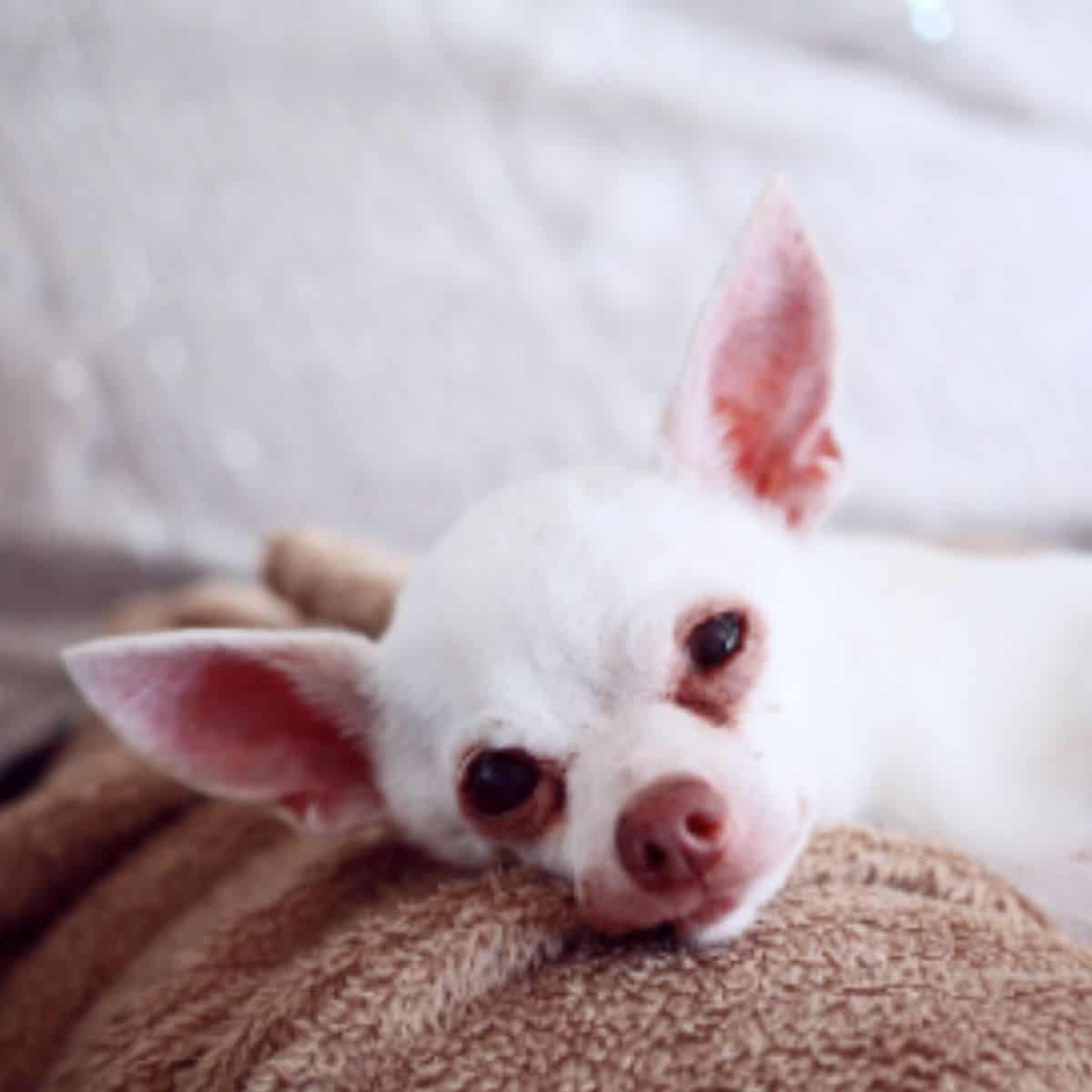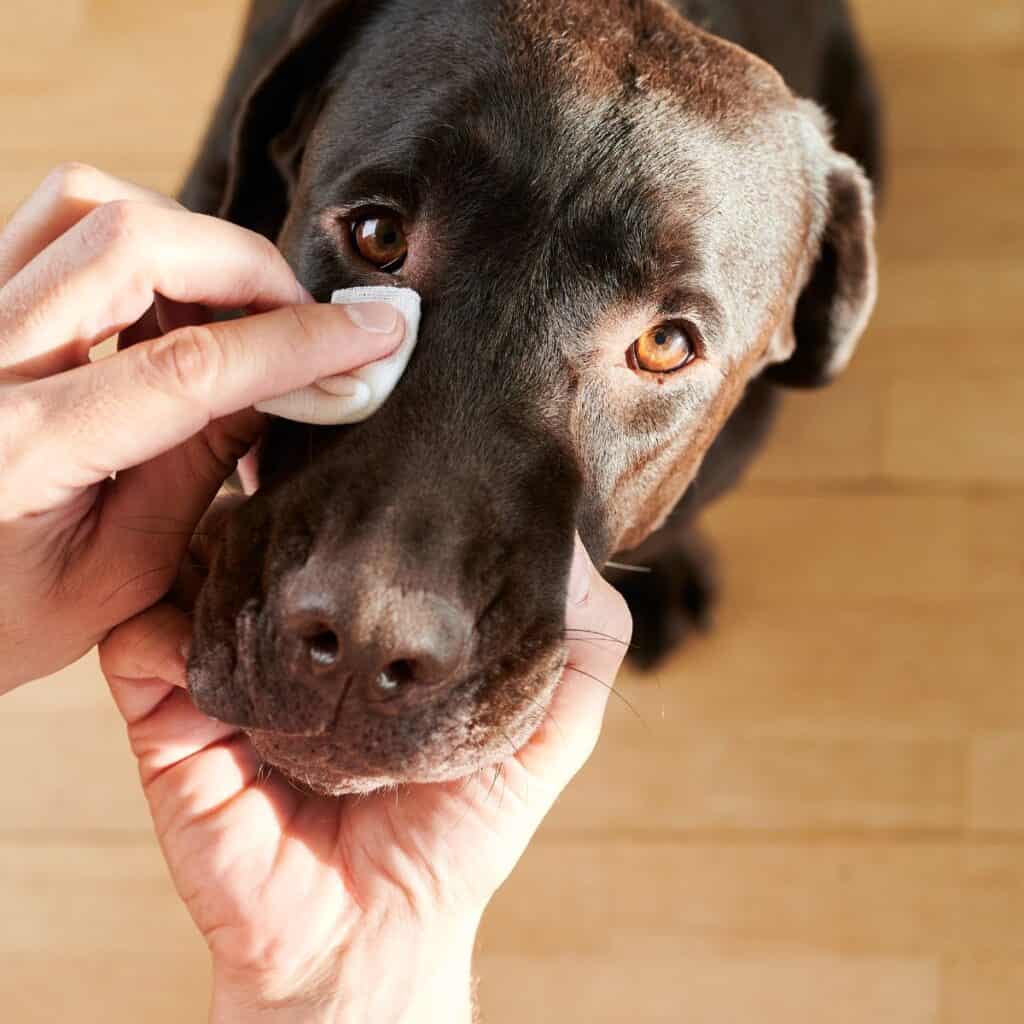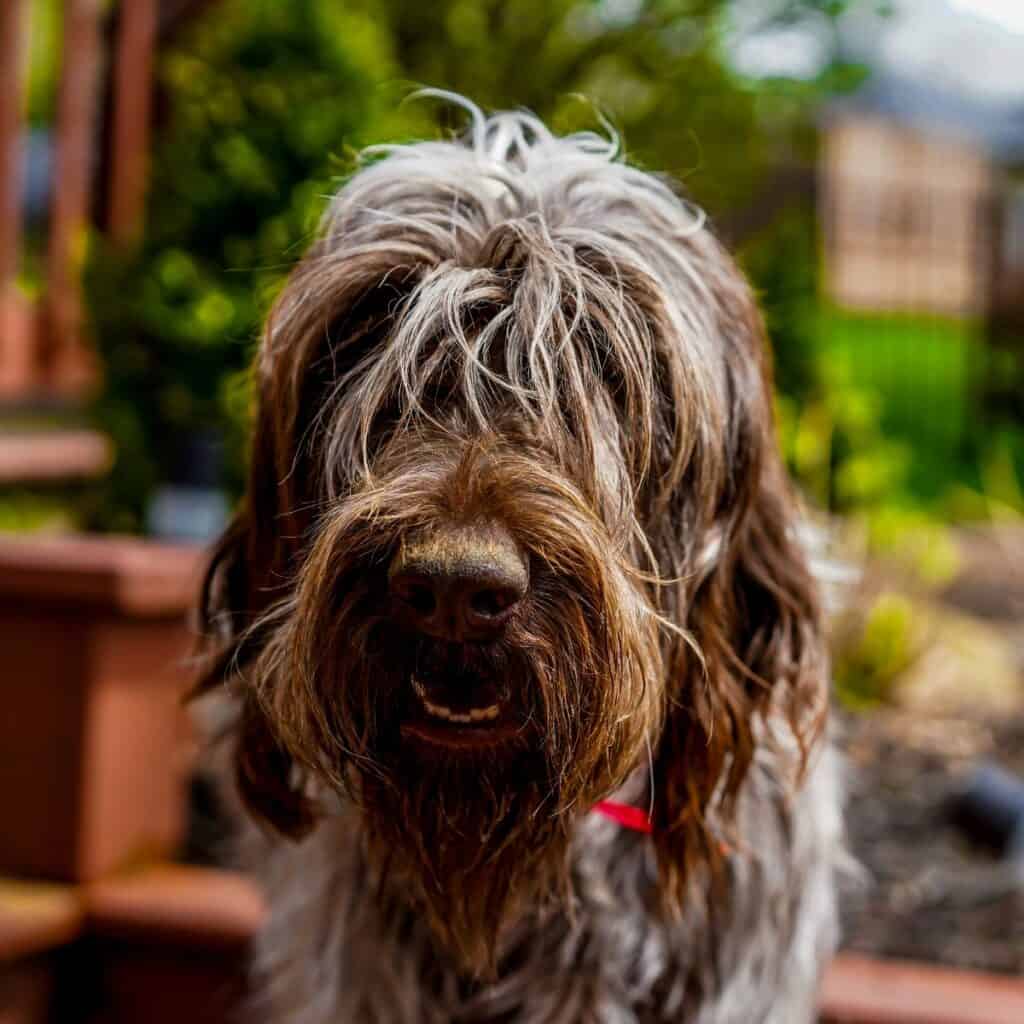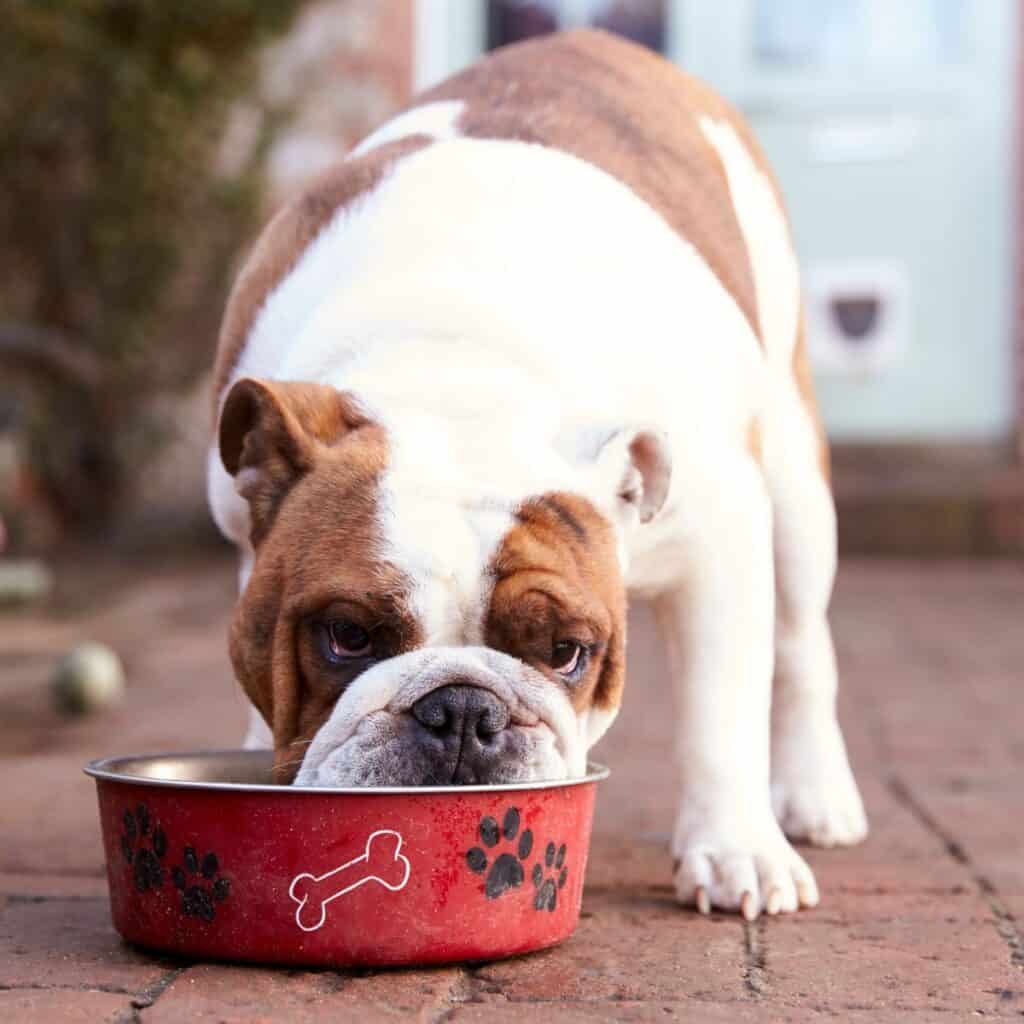As a dog owner, you may have noticed brownish/red stains around and under your dog’s eyes, close to their nose and asked yourself “what causes dog tear stains?” These stains, known as tear stains, can be a common issue for many dog breeds, including small breeds like Maltese, Shih Tzu, and Poodles. They can also affect short-nosed dogs or dogs with lots of fur around their eyes. Although tear stains may seem like a cosmetic problem, they can be caused by a range of irritants, including food sensitivities, anatomical abnormalities, eye injuries, eye infections, allergies, and even glaucoma.

What is Dog Eye Stains
So, what causes dog eye stains? The medical term for tear stains is Epiphora, which occurs when there is an overflow of tears from the eyes. While visiting a vet is always the first step when it comes to checking your pet for this issue, there are some general tips you can follow to reduce the sight of tear stains and prevent them from occurring in the first place.

What Causes Dog Eye Stains
Dog eye stains, also known as epiphora, occur when there is an overflow of tears from the eyes. This overflow can cause discoloration, often brown or brownish/red stains, around and under a dog’s eyes, close to their nose. While this condition is typically an aesthetic issue, it can be caused by a range of irritants, not limited to but including:
Food sensitivities
Anatomical abnormalities
Eye injuries
Eye infections
Allergies
Glaucoma
Some breeds, such as Maltese, Shih Tzu, and Poodles, are more susceptible to tear stains. Additionally, short-nosed dogs or dogs with lots of fur around their eyes are also more prone to developing tear stains.
It is important to note that tear stains can sometimes be a sign of an underlying health issue, and it is always recommended to consult with a veterinarian for a proper diagnosis. Your vet can guide you in the right direction for the right treatment for your dog’s tear stains, which may include an at-home treatment like an ointment or oral medication or a change in diet.
How to Prevent Dog Tear Stains: Tips from a Vet
According to Dr. Scott Miller, a veterinarian from grain-free dog food company Barking Heads, keeping the area around your dog’s eyes dry and clean is essential for preventing tear stains. To do this, clean the stained area with warm water and dry it with cotton balls. If your vet suspects allergies, they may prescribe an at-home treatment like an ointment or oral medication for you to administer. Additionally, trimming the long hairs around your dog’s eyes can help reduce irritation, which can lead to tear stains.

But what about dog food for tear stains? In some rare cases, tear stains can result from a wheat allergy, so switching to grain-free food like Barking Heads may help in those cases. While none of these tips are guaranteed to remove tear stains entirely, they can help to reduce their appearance and prevent them from worsening.
Dog Food for Tear Stains: The Benefits of Grain-Free Dog Food
One Barking Heads fan, Lola, a white Maltese, struggled with tear stains from 3 months old, and they persisted for nearly 3 years. After a visit to the vet, her tear stains were noted to be caused by a food allergy, and her vet suggested trying a grain-free diet to see if it would alleviate her allergy symptoms. Lola’s owner tried Barking Heads small breed dry dog food, Doggylicious Duck, which is hypoallergenic, along with other grain-free foods in her journey after her vet visit. And because it was an allergy-based issue, she saw some reduction in her tear stains after trial and error and visits to the vet.

According to Vicky Brierley, a pet nutritionist for Barking Heads, the brand’s pet food is created using highly digestible, high-quality, naturally sourced ingredients that offer premium nutrition to help maintain your pet’s everyday health and well-being. Recipes are formulated without specific ingredients which some pets may have a sensitivity to such as pork, soya, dairy & wheat. While grain-free dog food alone may not solve tear stains, it has other benefits for your dog, such as promoting a healthier coat and easier digestion.
How to Remove Tear Stains From Dogs
There are several ways to remove tear stains from dogs. Here are some methods you can try:
Regular grooming: Wiping your dog’s face daily with a damp cloth or using tear stain wipes can help remove any build-up of tears and prevent tear stains from forming.
Change your dog’s diet: As mentioned earlier, some foods can cause tear stains in dogs. Changing your dog’s diet to a high-quality, hypoallergenic dog food may help reduce tear staining.
Keep the eye area dry: Moisture can lead to the growth of bacteria that cause tear stains. So, keeping the eye area dry is essential to prevent tear stains. After cleaning your dog’s face, make sure to dry it thoroughly with a clean towel.
Trim hair around the eyes: Long hair around the eyes can trap tears, making it easier for bacteria to grow. Trimming the hair around your dog’s eyes can help reduce tear staining.
Use tear stain removers: There are several commercial tear stain removers available in the market that can help remove tear stains. However, it’s important to choose a safe and effective product that doesn’t contain harsh chemicals.
Visit the vet: If your dog’s tear stains persist despite trying the above methods, it’s best to consult a vet. In some cases, tear staining can be a symptom of an underlying health issue that needs to be treated.
Remember, removing tear stains is a gradual process and requires patience and consistency. With proper care and attention, you can keep your furry friend’s face clean and free of tear stains.
Conclusion
While tear stains may seem like a cosmetic issue, they can be a sign of underlying health problems. Therefore, it’s crucial to seek advice from your vet to determine the root cause of the issue. They can help you find the best solution for your dog’s individual needs. In addition, following the tips mentioned above and considering a switch to grain-free dog food can help prevent tear stains and improve your dog’s overall health and well-being.
Dog Tear Stain FAQs
There are several ways to remove tear stains from dogs, including Wiping your dog’s face daily with a damp cloth or using tear stain wipes can help remove any build-up of tears and prevent tear stains from forming, change your dog’s diet: to a high-quality, hypoallergenic dog food, keep the eye area dry, trim hair around the eyes, use tear stain removers: There are several commercial tear stain removers available in the market that can help remove tear stains. If your dog’s tear stains persist consult a vet. In some cases, tear staining can be a symptom of an underlying health issue that needs to be treated.
Dog Groomers use several tools to get rid of tear stains like trimming hair: Groomers can trim the hair around the eyes to prevent tears from getting trapped in the fur, cleansing: Groomers can use a specially formulated tear stain remover to clean the area around the eyes and to break down and remove the proteins and other substances that cause tear stains and shaving the hair around the eyes to remove tear stains and prevent their recurrence. This is typically done for dogs with severe tear staining or those with long hair that is difficult to keep clean.
It is not uncommon for dogs to have tear stains, especially certain breeds that are prone to excessive tearing. However, excessive tear staining can also be a sign of an underlying health issue, such as eye infections, allergies, or blockages in the tear ducts. It is always a good idea to consult with a veterinarian to rule out any potential health problems. Regular grooming and cleaning of the area around the eyes can also help to reduce tear staining.
Find more dog advice and fun stories in our popular book called Motherpuppin’ Adorable: What to do when your dog is better than everyone else’s the perfect companion for navigating the best life with your dog. Learn more about this loved book.

